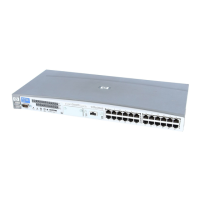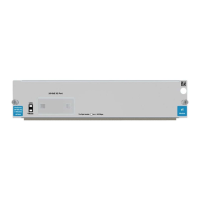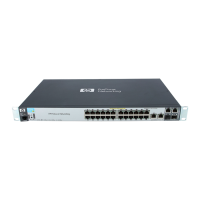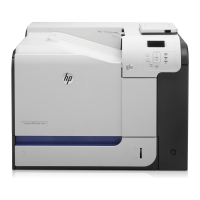
Do you have a question about the HP J4813A and is the answer not in the manual?
Overview of ProCurve Identity Driven Manager and its purpose.
Explains the benefits and necessity of using ProCurve Identity Driven Manager.
Details the components and how they interact within the IDM system.
Defines key terms and concepts related to ProCurve Identity Driven Manager.
Outlines the system requirements and supported devices for IDM.
Lists ProCurve devices compatible with IDM functionality.
Specifies the minimum system requirements for IDM installation.
Covers prerequisites for implementing access control methods with IDM.
Provides instructions for upgrading existing IDM installations.
Guides users through the process of registering their IDM software.
Suggests resources for learning to use the IDM application.
Provides information on obtaining technical support for ProCurve products.
Prepares users by outlining initial considerations before installing and configuring IDM.
Step-by-step guide for installing the IDM Agent on a RADIUS server.
Explains how IDM can automatically discover network elements.
Outlines the general steps involved in configuring IDM for network access control.
Explains the core concepts and operational model of IDM.
Introduces the graphical user interface of the IDM client.
Describes the main dashboard components for viewing IDM status.
Explains how to navigate and utilize the IDM tree structure.
Details the available toolbars and menus within the IDM GUI.
Covers using IDM to monitor user activity and network performance.
Explains how to configure global attributes and options within IDM.
Guides on generating and utilizing reports for analyzing network usage.
Details the process of scheduling reports for automated generation.
Explains how to manage and configure session cleanup policies in IDM.
Describes how to view and analyze detailed information about user sessions.
Explains the fundamental structure and concepts of IDM configuration.
Reviews the steps required to configure IDM for network access control.
Details how to define network access points or groups of ports as locations.
Explains how to set time-based access rules for users.
Covers defining and managing network resources for access control.
Guides on creating and managing access profiles for user permissions.
Details how to create and manage groups of access policies for users.
Explains how to assign users to access policy groups for network access.
Describes how to use global rules for specific exception-based access control.
Explains the process of deploying IDM configurations to the RADIUS server agent.
Covers manually defining realms, servers, and users within IDM.
Provides steps for manually creating new realms in IDM.
Details how to edit or remove existing realms.
Explains how to manually add RADIUS server definitions to IDM.
Guides on editing or removing existing RADIUS server configurations.
Describes the manual process of adding new user accounts in IDM.
Details how to edit or remove existing user accounts.
Guides users through importing data from external sources like Active Directory.
Step-by-step guide for importing user information from Active Directory.
Details importing user data from LDAP servers.
Explains how to import user data from XML files.
Explains how to view and manage IDM events to identify network problems.
Guides on filtering IDM events based on various criteria.
Details how to monitor events specific to RADIUS servers using activity logs.
Covers enabling and using tracing tools for IDM problem diagnosis.
Covers specific troubleshooting tips and common issues not categorized elsewhere.
Indicates which ProCurve devices support specific IDM features.
Provides recommended methods and guidelines for using IDM effectively.
Discusses recommended authentication methods for optimal IDM performance.
Advises on handling Active Directory domain name configurations for IDM.
Offers guidance on implementing and managing multiple RADIUS servers with IDM.
Explains how IDM manages users not found in its database.
Details strategies for creating access rules that allow or reject user access.
Explains the functionality and best practices for rate-limiting in IDM.
Lists and explains various types of user events and their meanings.











